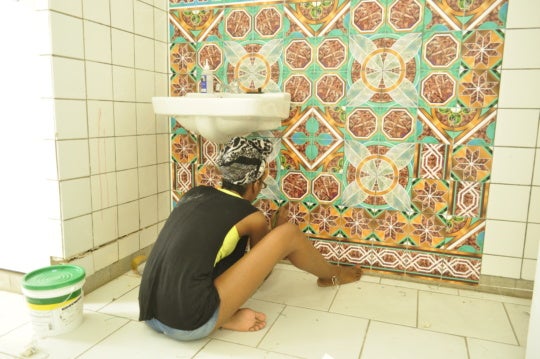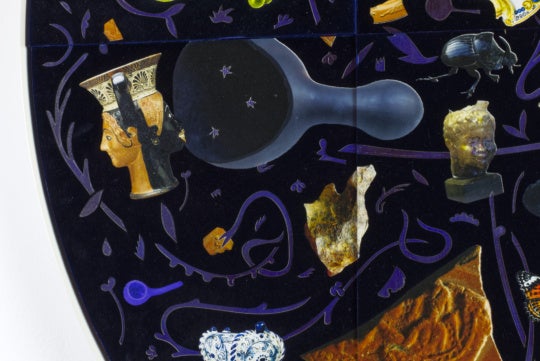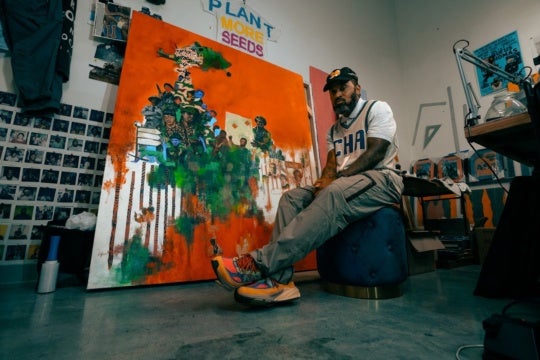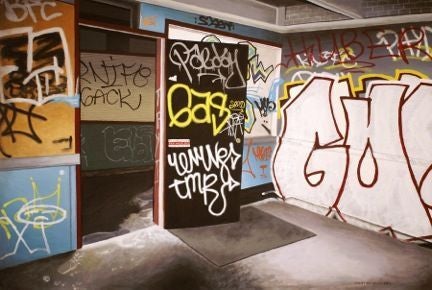
The last few years have marked a time of great change and transition for the Callanwolde Fine Arts Center. Sam Goldman, who had been the executive director since 1998, passed away unexpectedly in September 2012. Laurie Allan, the gallery director, left the organization in March 2013. This was only one month after Peggy Still Johnson had stepped into her role as the new executive director. In a fortuitous change of events, Christina Bray, who became the Assistant Director of Development in March 2013, quickly demonstrated that she was more than capable of taking over the curation of the Callanwolde gallery as well. She is currently in the midst of planning an ambitious exhibition schedule for 2015 that will highlight new work by local Georgia artists.
With double masters in fine arts and theological studies, Bray brings a unique sensibility and vision to her role. Her own work has been attracting attention and critical acclaim since 2006, when “The Milledgeville Project” was unveiled at Gallery 100 at the Atlanta College of Art. The derelict, abandoned buildings of Central State Hospital in Milledgeville were the subject of Bray’s paintings and she brought a documentary-like realism to the work that conveyed the foreboding, tragic, and eerie ambiance of what was known as the Georgia Lunatic Asylum when the institution opened in 1841. Exploring similar subject matter, Bray’s 2012 Urban Works show contemplated how sites like the now-demolished Glidden Paint Factory, the Krog Street Tunnel and the Pullman Rail Yard have been transformed into something new by graffiti artists.
Jeff Stafford: What would you like to change, if anything, about art exhibitions at Callanwolde?
Christina Bray: The pattern that the gallery has had for a long time is to do one-person shows. They used to do four shows a year of emerging Atlanta-based artists, so that’s basically what I’ve maintained for 2014, though we’ll have five shows this year. In 2015, I want to do at least one group show. What we’re hoping to do is show work that is comparable with the best contemporary art that you would see in Atlanta. I think there is a misconception that, because we’re in this mansion, we’re stuffy and conservative, and that’s certainly not the case. We see Callanwolde as a very relevant part of the contemporary art scene in Atlanta, and we will bring in shows that demonstrate that.
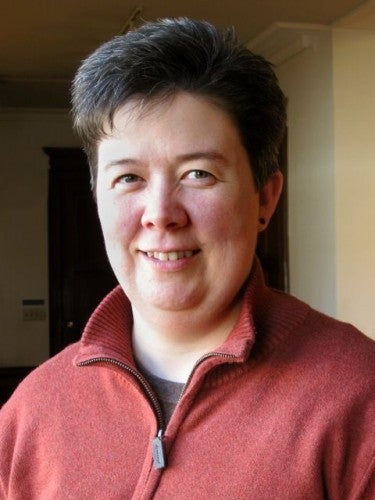
JS: Any plans for other art venues at Callanwolde besides the gallery?
CB: Because Callanwolde is on the National Register of Historic Places, we can’t nail into the gallery walls. So we use the Walker Hanging System. One of our goals is to get the Walker system put into almost every room in the house. We can really expand the gallery program that way, and maybe have more than one show going on at a time. I also want to get some movable walls and some additional lighting upstairs for the gallery.
JS: As an artist who is now working on the exhibition side, what are your thoughts about your role here?
CB: I think a lot of emerging artists find that it’s next to impossible to get a show in Atlanta, or they don’t know where to fit in, or they don’t know how to be noticed. But the reality is that there are a lot of opportunities here. The art scene is big enough that the opportunities exist but small enough that the curators and gallery directors are accessible. I want Callanwolde to be seen as a place that can connect artists to opportunities. I want Callanwolde’s gallery to be part of Atlanta’s interconnected web of arts organizations that support each other and the artists who are coming to us.
JS: Regarding your own work, do you think you will continue to focus on the same subject matter as your “Urban Works” show?
CB: I think I still have unfinished business with this subject. I used to say that what I was doing was documenting these spaces. “Documentary painting” is what I called it. I started off doing images of the old Central State Hospital in Milledgeville. It was important subject matter. As ghastly as it was, it was something that deserved to be remembered. It was the same with my paintings of New Orleans after Hurricane Katrina. A snapshot photo would lay bare everything that’s in the space, but you still don’t get the emotional pull of what it feels like to be standing among the ruins of somebody’s house that got swept away in a flood, or an old psychiatric hospital where people underwent forced lobotomies. Or even an elementary school that has been transformed by graffiti writers. What I want is to convey in my paintings and photographs is what it’s really like to be there.
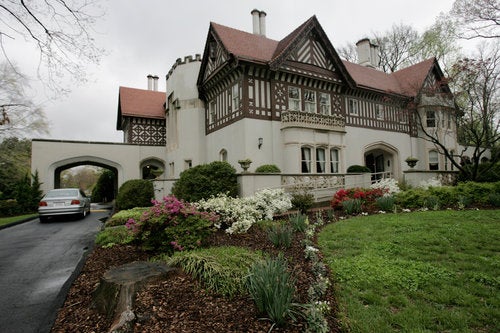
JS: Are there any artists you have recently discovered whose work dazzles you? It doesn’t have to be a current artist. It could be someone from the 20th century or earlier.
CB: There’s a photographer, Jerry Uelsmann. He did all of these wonderful black-and-white prints that had to do with multiple exposures, having things overlapping. It looks like something that would have been done digitally, but it’s all done in the darkroom. He sees himself as an alchemist. He’s not opposed to programs like Photoshop and thinks that’s a perfectly valid way of making art, but he doesn’t want to change from the processes he’s used to. He really loves dealing with the chemistry and the light and the magic that happens in the darkroom. The images he creates are just amazing.
JS: I read that one of your New Orleans photographs was used in the opening credits of HBO’s Treme series.
CB: My friend Dot Moye, who is an art consultant, had this dream of getting together a collection of doors from houses in New Orleans that had the X-codes spray painted on them. She wanted to create an exhibition of the doors, but she was unable to get them, so she ended up doing an online exhibition of the X-codes. She asked people who had photographs of these X-codes to send them to her, and she created an archive of all those images on Southern Spaces’ website. Out of the blue one day, she got an email from a producer at HBO who wanted to use one of the images in the opening credits for Treme and asked how to get in touch with the photographer, and that photographer was me. And so they paid me an honorarium for the rights to use the image. It was really cool.
Currently on view at Callenwolde: “Interference: Reactions to Shooter Video Games / Paintings and Animation by Temme Barkin-Leeds,” through May 9. Jeff Stafford is an Atlanta-based arts and lifestyle writer.

